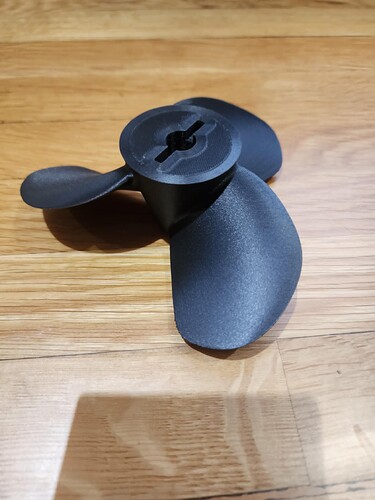Ceramic glass for fireplaces or stoves is very expensive. 450€ or USD/sqm that is 50€ or USD /sqfoot. If it is the way to go to print without stress … 
I ordered 700x150mm for 40€ for my fireplace
I printed on 6,99€ IKEA mirrors for 2 years only broke one(i broke it while removing a print).
8 kg printed so far (PLA, PETG)
Same here, use it for 3 years with 3dlac. I mainl print asa and abs, it sticks hard when it’s hot, as soon as it cooles down, it releases itself.
I paid 14,4€ for 20x20cm oven glas. There are also other sources dedicated to 3DP, search borosilikat glas. Maybe i should make a better insulation for my heated bed, so i get higher temperatures, so i do not need a rough surface to make it stick when printing complex geometries.
It happened again, with so sold Borosilkate glas. It is astonishing, that some plastic printing can disturb the glas structure in such way. Meanwhile i had a “conventional” broken mirror, almost split into half. I have set the bed temp to 80°C by an external powersupply, forget all the previous descriptions, a laptop powersupply with 19V will service with 60% more power, no problem to reach the desired temperature any more. The FET on the board is very well dimensioned, so lets use it.
Hi Powerglider,
i can recommend to use a glue stick and to print the first layer in the right distance to the print bed - if it’s to near it sticks like a devil 
Mike
Is it a tempered safety glass or a normal glass?
The safety tempering resists temperatures of 200° normally as well as sudden temperature variations
I bought it here Amazon.de
I thought borosilikat glass is temperature independent, maybe this glass was a fake.
I will now use https://www.ebay.de/itm/Grundpreis-360-m-Kaminglas-Ofenglas-feuerfestes-Glas-Kaminscheibe-auf-Maß/263295249882?ssPageName=STRK%3AMEBIDX%3AIT&var=562305755198&_trksid=p2060353.m2749.l2649
Its 1mm thicker so i have to adjust calibration, but ok.
I also chose this direct printing on glass to have it stick very good, so it does not warp. If i need to make it less sticky by choosing a bad bed adhesion in the first layer its very contraproductive.
This Ovenglass broke as well after the second print. The first print did not stick so hard. So it seams to be a mechanical issue, not thermal.
Edit: The good thing is: This PETG sticks so good, it breaks the glass it is printed on. This also means the layer adhesion is excellent. My parts are huge and 100% perimeters, so they get partly shiny, they are heavy duty. If you do not experienced glass break with petg it is possible that your parts are not that stiff in themself?
Then I bought a custom size tempered safety glass at 50 euros and it was not flat so it was impossible to calibrate the CR10s… I bring it back on 6 for expertise and exchange.
Maybe try a magnetic bed. They have good adhesion and its super easy to release prints.
Maybe the props were a little bit special geometry which made the glass break.
I am trying to build the mast clamp for 63100 with gong foil. I think it was too tight:
I print this with PETG 0.2mm layer height, 0.4mm nozzle, 250°C/80°C at 27mm/s, almost no cooling.
Maybe i still can use the part with a single screw through the crack? Some more sanding on the interface to make it fit better.
Wow, 100% infill?
PETG clamp I print 230°,80°, 35-40mm/s 0,2mm, 10-20% cooling, 6perimeter, 60% infill. Its strong and still a bit flexibel.
Holds so far, no issues after over 20h heavy riding in Saltwater
Take aways from this video:
- Drying is important not only for stringing, but also for strength, specifically layer adhesion.
- Pla, asa, abs do no require drying.
I’m anything but a 3D printing master but I don’t agree that PLA doesn’t need drying. I have had numerous misprints with “damp” PLA. Put the same spool in my dryer and get it down to the right humidity level and the problems are gone.
Yes, I agree. It is only his conclusions.
Drying pla makes a huge difference for me. Here is a pic of a recent pla-cf print I did with dry filament. No way you can get this good withdamp pla.
Also do not assume new in bag is dry. This pla came all vac sealed but when in my dryer it showed over 50%!!! 8hrs later at 50C it was less than 20% and printing smooth as this.
I cant reach this quality. Dozens of tries already. Can you share the parameter to print with this perfect quality overhang?
I am using a ender 3 neo and cura latest default pla profile as start.
layer 0.16
perimeter walls 10 or more
creality hyper pla-cf at 230C bed at 60C
support zigzag with brim and roof, overhang angle 72.
printed TE on plate
Dry the pla so 20% or less.
Print in a room no windows and no disturbance of wind or vibration…at night is best
Does a 3d benchy boat look perfect? Must have at least that good before messing around with props.
ALso esun pl+ prints well just not as slick as the pla-cf



